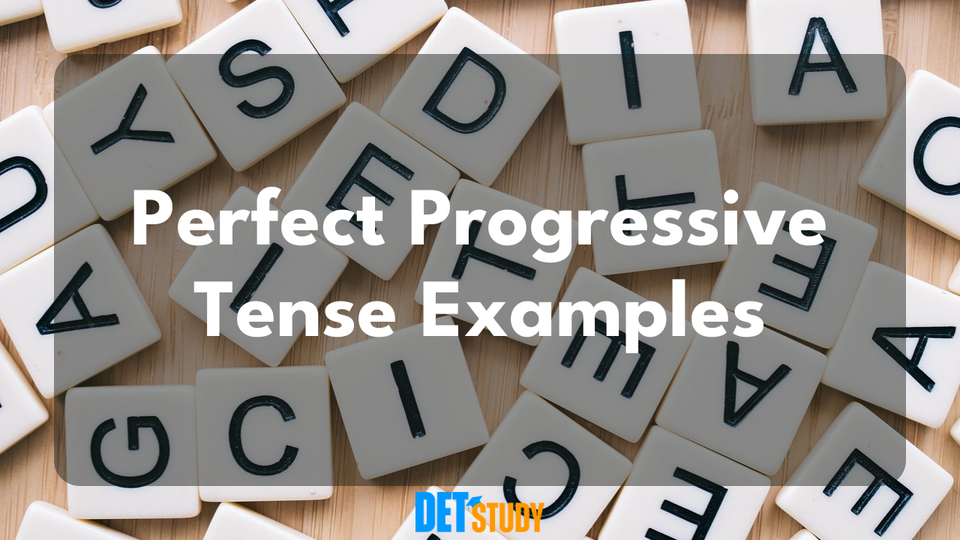完成进行时详解:实例助你文笔更精湛

完美进行时态介绍
完美进行时态,又称完成进行时,结合了完成和进行两种体态。它描述了一个过去开始、持续了一段时间,并且目前仍在发生或其影响现在仍能感受到的动作。这种时态强调了活动的时长或连续性。⏳
主要构成和用法:
- 现在完成进行时 (Present Perfect Progressive Tense): (描述过去开始、现在仍在进行或与现在相关的动作。)
示例: - "She has been studying for three hours." - "They have been playing soccer since 2 PM."
- 过去完成进行时 (Past Perfect Progressive Tense): (描述在过去某个事件发生之前一直在进行的动作。)
示例: - "I had been working for five years when I got promoted." - "By the time we arrived, they had been waiting for over an hour."
- 将来完成进行时 (Future Perfect Progressive Tense): (描述在将来某个事件或时间之前一直在进行的动作。)
示例: - "By next year, she will have been living here for a decade." - "We will have been traveling for 10 hours by the time we reach our destination."
请记住: 这些时态强调动作的持续时间以及它如何随着时间影响其他事件。通过练习“for”、“since”和“by”等时间状语来提高流利度。🚀
通过练习和对话示例来掌握这些时态有助于提高英语理解和流利度。将它们与“for”、“since”、“by”和“until”等时间状语联系起来,以巩固其用法,将非常有益。
使用官方优惠码,在 Duolingo English Test 上省钱
理解完美进行时态的结构
为了掌握完美进行时态,我们将逐一考察其每种形式。它结合了完成和进行两个方面,以显示一个动作随时间的持续。每种时态都使用“have/has/had/will have been”加上以“-ing”结尾的动词。
现在完成进行时
- 结构:
have/has been+ verb-ing - 用法: 用于描述过去开始并持续到现在,或对现在产生影响的动作。
示例: - "I have been reading this book for two weeks." - "She has been learning French since January." - "They have been working on the project all day."
过去完成进行时
- 结构:
had been+ verb-ing - 用法: 用于描述在过去某个事件发生之前一直在进行并已停止的动作。
示例: - "He had been jogging every morning until he moved away." - "We had been discussing the plan for hours before we agreed." - "She had been working at the bakery for a year before her new job."
将来完成进行时
- 结构:
will have been+ verb-ing - 用法: 用于描述将持续到未来特定时间点或事件的动作。
示例: - "By next summer, I will have been studying at the university for three years." - "In December, he will have been working there for a decade." - "They will have been volunteering at the shelter for a month by the time we visit."
这种时态将动作的开始、持续时间及其与现在或未来的关联连接起来。掌握它有助于在各种语境中表达复杂的时间关系和持续动作。熟能生巧!✨
现在完成进行时示例
这种时态描述了过去开始但仍在进行或与现在相关的动作。它使用“have/has been”+ verb-ing。
示例:
- "I have been studying for my exams all week."
- "She has been playing the piano since she was six years old."
- "They have been working on this project for several months."
- "We have been waiting for the bus for forty minutes."
- "The kids have been enjoying the summer camp this week."
- "He has been running every morning."
- "You have been doing great work this year."
如何与时间状语连用:
这种时态常使用“for”(表示持续时间)和“since”(表示起始时间)来强调从过去到现在持续性。“Lately”也表示近期、频繁的动作。
- “For”表示持续时间:"I have been watching TV for three hours."
- “Since”表示起始时间:
- "She has been wearing glasses since she was a child."
- “Lately”表示近期、频繁的动作:
- "He has been sleeping poorly lately."
有效地使用这种时态可以突出正在进行的、相关的动作及其持续时间,从而增加沟通的深度。练习有助于内化其用法。👍
过去完成进行时示例
这种时态描述了过去一直在进行,并在另一个过去动作或时间点之前完成的动作。它强调持续时间,使用“had been”+ verb-ing。
示例:
- "I had been studying for hours before the power went out."
- "She had been living in Paris for a year when she got the job offer."
- "They had been arguing about the new policy until they reached an agreement."
- "We had been waiting at the bus stop for thirty minutes before the bus arrived."
- "By the time Mark arrived, we had been cooking for two hours."
- "The children had been playing outside when it started to rain."
- "He had been reading a novel before the class started."
了解 Duolingo English Test (DET) 评分系统
与时间状语的用法:
这种时态使用“before”、“when”、“by the time”和“until”等表达来显示过去动作的持续时间和连续性。
- “Before”表示中断:
- "She had been practicing before the concert began."
- “Until”表示持续:
- "We had been waiting until the guests arrived."
- “By the time”强调一个终点:
- "By the time he called, I had been pondering over the issue for hours."
掌握这种时态及其时间状语可以提高描述过去动作序列和持续时间的能力,丰富叙事流程。📖
将来完成进行时示例
这种时态描述一个将持续到未来某个时间点的正在进行的动作,强调其持续时间。它由“will have been”+ verb-ing 构成。
示例:
- "By next month, I will have been working here for five years."
- "She will have been studying for three hours by the time her friends arrive."
- "They will have been traveling for 48 hours by the time they reach their destination."
- "We will have been living in the city for a decade before we consider moving."
- "By next spring, the organization will have been operating for half a century."
- "He will have been training for the marathon for six months by race day."
与时间状语的用法:
“by”、“for”和“when”等时间状语强调持续到未来某个时间点。
- “By”表示在未来某个时间点完成正在进行的动作:
- "By the end of the year, I will have been saving money for a new car."
- “For”具体说明动作的持续时间:
- "He will have been playing the guitar for ten years by the time he joins the band."
- “When”引入正在进行的动作之后的未来动作:
- "When the project launches, I will have been working on it for over a year."
理解这种时态有助于精确地表达未来的情景,特别是对于那些引向里程碑的动作。练习有助于提高会话和写作的流利度,增加清晰度。📈
DET Study:提升您的备考水平
DET Study 提供了一套包含超过 15,000 道练习题的综合资源,侧重于利用形容词和副词来强化您的语法技能。定期练习这些有针对性的材料,可确保您以增强的信心和精确度应对 Duolingo English Test,随时准备取得理想分数。
🎯 需要更多练习? 访问 DETStudy.com 获取专家资源、15,000+ 练习题以及 AI 驱动的写作和口语反馈。
